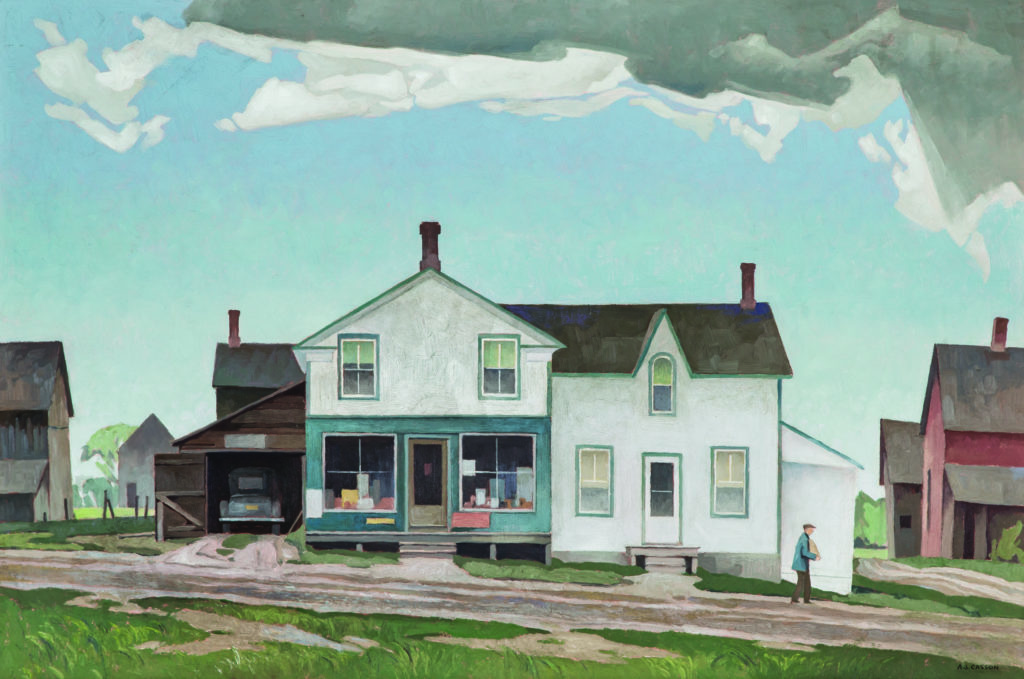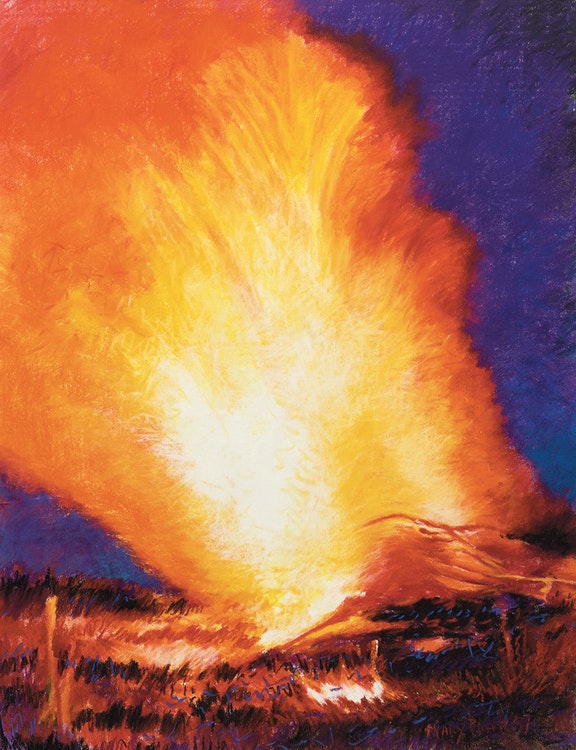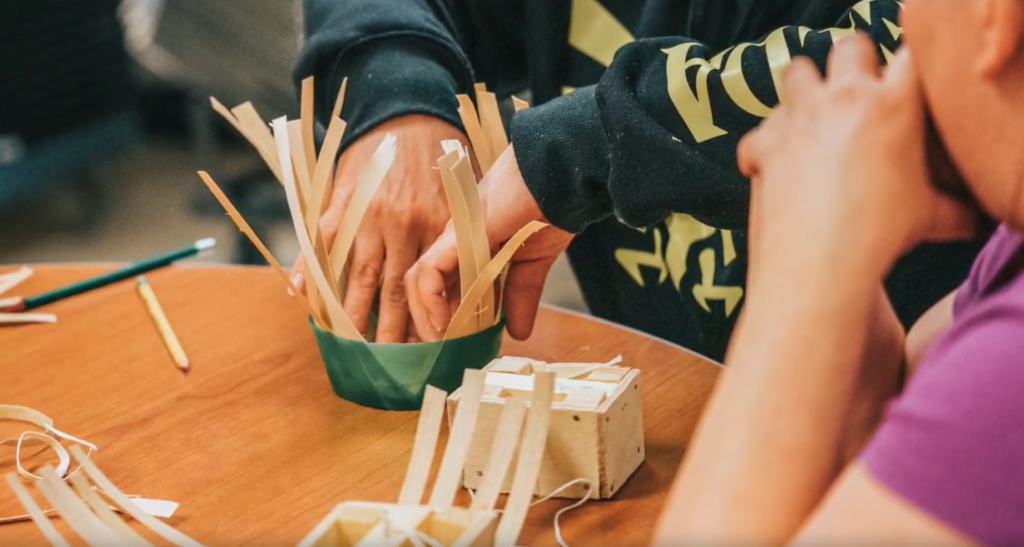This week brings more funding and leadership shake-ups, and repatriation efforts from a BC museum. Scroll down to view highlights from Canada’s major spring art auctions at Heffel, Consignor Canadian Fine Art and Waddington’s—including A.Y. Jackson works deaccessioned by the Art Gallery of Ontario, a Matisse painting on the market for millions and broken sales records.
FUNDING NEWS
Amid cuts to other sectors, Ontario’s government has eliminated funding to the Indigenous Culture Fund. It has also, separately, pulled millions of dollars in arts support. Recently released expense estimates for this fiscal year include a cut to arts sector support from $18.5 million to $6.5 million and a cut to the Ontario Arts Council, which awards grants to a diversity of artists and organizations, of $10 million. Additionally, the government eliminated funding for the Indigenous Culture Fund (ICF), established in recent years as part of Ontario’s response to the Truth and Reconciliation Commission. The ICF supported various kinds of cultural activities, including projects around language, food, traditional knowledge and more. (The Globe and Mail/Canadian Press)
Canada Council for the Arts and CBC/Radio-Canada announce $1 million partnership to invest in digital creation. The Creation Accelerator initiative will support projects throughout its development stages, including an initial grant to work with a producer, mentorship from CBC/Radio-Canada and potential distribution across its platform. The pilot project aims to amplify the quality and scale of art through digital technology and further increase digital literacy of the arts sector. Applications, and more details, will be available in late June, and are open to artists and organizations in all fields of practice, with no prior digital experience required. (Newswire)
CHANGE-UPS
Kathleen Bartels leaves her position as director of the Vancouver Art Gallery. The VAG announced on Tuesday that Bartels is stepping down after 18 years to pursue other personal and professional interests. Under Bartels, the institution saw an increase of private donations by more than 250%, an endowment that grew from $200,000 to more than $11 million and a significant growth in attendance. Bartels has also been a major figure in leading the gallery to a new, expanded building in downtown Vancouver, designed by Herzog & de Meuron architects. Daina Augaitis, former chief curator and associate director of the VAG, will serve as interim director. Bartels will remain on as a special advisor during this transition. (public statement)
The Montreal Museum of Fine Arts appoints Jennifer Laurent as curator of Modern and Contemporary Decorative Arts. Laurent brings an expertise in decorative arts from previous positions at Miriam Shiell Fine Art in Toronto, Christie’s Auction House in Paris and the Design department of the Centre Pompidou. She succeeds Diane Charbonneau, who has retired after 20 years in the position. (press release)
ON REDRESS
The Royal BC Museum highlights Indigenous repatriation with policy changes and more than $580,000 in grants. The Royal BC Museum (RBCM), which houses a comprehensive collection of First Nations cultural materials, began developing its repatriation program in 2016. RBCM has recently announced that anything acquired from Indigenous peoples from 1885 to 1951, when potlatch ceremonies were banned in Canada, will be eligible for repatriation, and that it will no longer collect or study ancestral remains. Last year, the museum distributed more than $580,000 to First Nations communities to help begin the process of finding their ancestors’ remains and artifacts lost inside colonial collections. (CBC)
Toronto-based legal firm wins return of two paintings looted by Nazis. Mondex Corporation, which specializes in the return of Nazi-era looted artworks to their heirs, has won a case to return two 17th-century Dutch paintings to descendants of Holocaust survivor Jacob Lierens. The paintings were auctioned in October 1941 during Nazi occupation. Unless there is clear evidence otherwise, the sale of artwork by Jewish individuals during the German occupation is considered forced sale. (The Globe and Mail)
SPRING AUCTION HIGHLIGHTS
At Waddington’s, the top highlight of Monday’s auction was a painting by Group of Seven artist A.J. Casson, Roadside Store (1961), which sold for $240,000. Meanwhile, important works by Inuit artists continued to be presented, with Marion Tuu’luq’s Together in Spring (ca. 1977) fetching $72,000, more than triple the artist’s previous record, set by Waddington’s in 2011. Other works by Inuit artists performed well, including Osuitok Ipeelee’s Standing Caribou (1990), which realized $38,400, nearly double its estimate. This year, the auction house’s partnership in the inaugural First Arts auction of Inuit and Indigenous art—a new venture by Pat Feheley, Ingo Hessel, Mark London and Waddington’s—set a record for the highest bid an Inuit artwork has received at a public auction. Joe Talirunili’s sculpture Migration Boat (early-mid 1970s) was sold for $408,000 after a spirited round of bidding, exceeding its $250,000 maximum estimate.

A.J. Casson’s Roadside Store, 1961, was Waddington’s top sale at auction.

Marion Tuu’luq,Together in Spring, ca. 1977.

Osuitok Ipeelee, Standing Caribou, 1990.

Joe Talirunili, Migration Boat, early-mid 1970s.
 Mary Pratt’s Bonfire, 1997, was auctioned at Consignor Canadian by The Fluvarium in St. John’s to help the financially struggling environmental centre.
Mary Pratt’s Bonfire, 1997, was auctioned at Consignor Canadian by The Fluvarium in St. John’s to help the financially struggling environmental centre.
At Consignor Canadian Fine Art, works by Lawren Harris and David Milne saw strong auction results. Harris’s graphite drawing Algoma, of a favoured subject, and Milne’s watercolour Soft Hills (Misty Hills) (Boston Corners, N.Y.) (1917) both hit the auction block for the first time, selling for $25,960 and $112,100 (triple its auction estimate), respectively. Claude Tousignant’s abstract canvas Absurdo was a top highlight, realizing $188,800, far above its estimate of $60,000 to $80,000. Mary Pratt’s Bonfire (1997), a work that has garnered the East Coast’s interest, was put up for auction by The Fluvarium environmental centre in St. John’s to raise much-need funds—it sold for $13,000.
Finally, Heffel’s auction saw major highlights in sales by Canadian artists, with two paintings by Jean-Paul Riopelle (Carnaval II and Incandescence) selling for more than $2.3 million each. The works were formerly part of the estate of well-known Montreal art collectors Blema and H. Arnold Steinberg. A canvas by Claude Tousignant, Sans Titre, also performed well at Heffel, selling for $210,000 and setting a new record for the artist at auction. Three paintings by A.Y. Jackson put up for auction by the Art Gallery of Ontario (AGO) also sold for a total of $672,625. These canvases were part of the 20 Jackson works deaccessioned by the AGO to raise funds to diversify its Canadian and Indigenous collection. The AGO still retains over 150 works by Jackson. Meanwhile, a much-publicized painting by Henri Matisse, which marked Heffel’s international ambitions, failed to sell at auction. Matisse’s Femme assise sur un balcon was estimated to fetch between $3.8 and $5.8 million, but only received a high bid of $3 million which failed to meet the seller’s reserve price.
This article was corrected on June 26, 2019. The original copy addressing the Indigenous Culture Fund erroneously implied that that fund was related to the arts. In fact, that fund was related to supporting culture, including language, traditional knowledge, gatherings and more. The original copy also erroneously implied that the Indigenous
Culture Fund was part of the Ontario Arts Council’s programs. In fact, though it was administrated through the Ontario Arts Council, it was not an Ontario Arts Council program, nor was it part of Council’s own funding envelope. The articles originally linked to as references were also erroneous in this respect, so the link has been removed, though the titles of the sources remain.

 A workshop at the Indigenous Arts Conference 2019, Ottawa, held by the Aboriginal Arts Collective of Canada with the support of the Indigenous Culture Fund (Ontario Arts Council). Courtesy AACC.
A workshop at the Indigenous Arts Conference 2019, Ottawa, held by the Aboriginal Arts Collective of Canada with the support of the Indigenous Culture Fund (Ontario Arts Council). Courtesy AACC.




